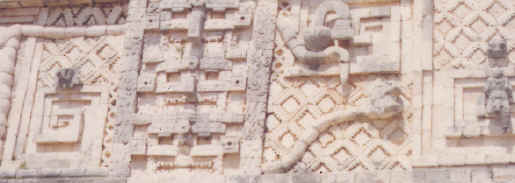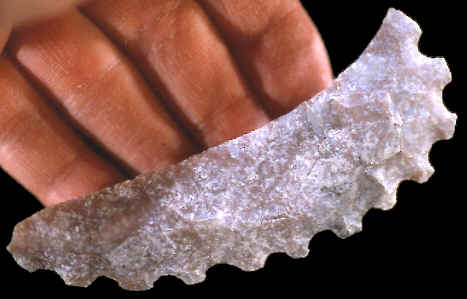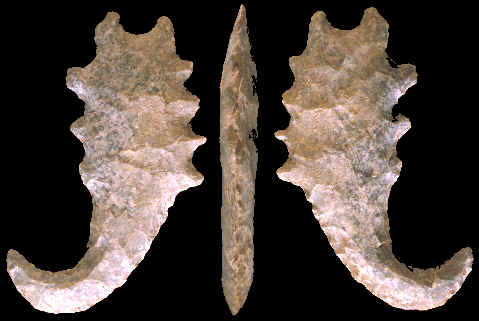|
|
|
One theory for the beginning of the eccentric making tradition comes from the find of an early dated eccentric found in the highlands near Kaminaljuyu just north of Guatemala City. This single eccentric was found outside of the Maya lowlands in a Miraflores Late Preclassic (100 B.C.) burial. On the site of Altun Ha, in the northern Belize lowlands, eccentrics made from green Central Mexican obsidian have been discovered that date to the Proto-classic Period (A.D. 200). These green obsidian eccentrics were manufactured with a Teotihuacan style. The earliest eccentric find in the highlands and the later but still early Teotihuacan influenced green obsidian eccentrics from the Maya lowlands suggests a foreign influence for eccentric making. The idea of chipping eccentrics may have been diffused to the Maya lowlands by a Teotihuacan trade that began prior to the Early Classic Period. |
|
|
But wherever the idea originated from, the Maya were the ones who developed the eccentric making phenomenon to an extraordinary level. Some of the eccentrics they produced have no comparison in craftsmanship with any other Stone Age culture in the world. |
|
|
Eccentrics have been found in a wide range of sizes. At Altar de Sacrificios in Guatemala they were as small as 1 3/16 inches (3 cm) long for a serrated triangle. On the sites of Altun Ha and Lamanai in Belize David Penderhast (1979; 1982) reported eccentrics as large as 30 3/4 inches (78 cm) long. |
|
|
There have been several discussions about the numerical count of the eccentrics found within caches. Some people suggest that many caches tend to be found in counts of 9 and 13. The cache shown on page two of this article has 26 eccentrics which would be two 13's. The most spectacular Maya eccentric cache ever found from the 1989 find at Copan by Fash and Fasquelle contained 9 eccentrics. |
|
|
The Maya people believed the sky was held up by five different trees and that heaven was divided into 13 layers, each with it own god. They also believed that the underworld was made of 9 layers and controlled by the "lords of the night" ruling over it. |
|
| CONTINUE ON TO PAGE SIX | |
|
"REFERENCES"
1946,
"The Ancient Maya," by Sylvanus G. Morley, page 436. |
|




